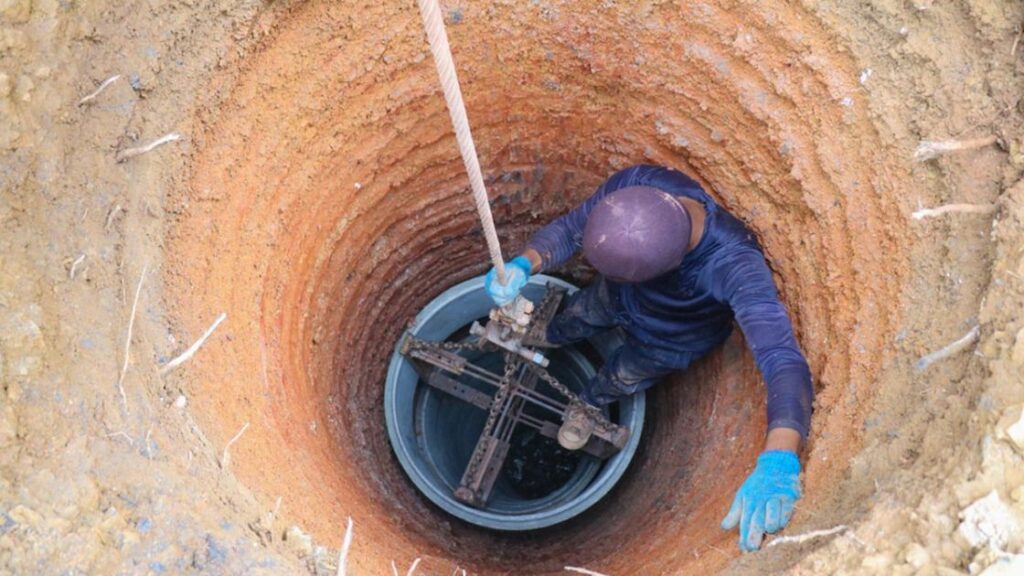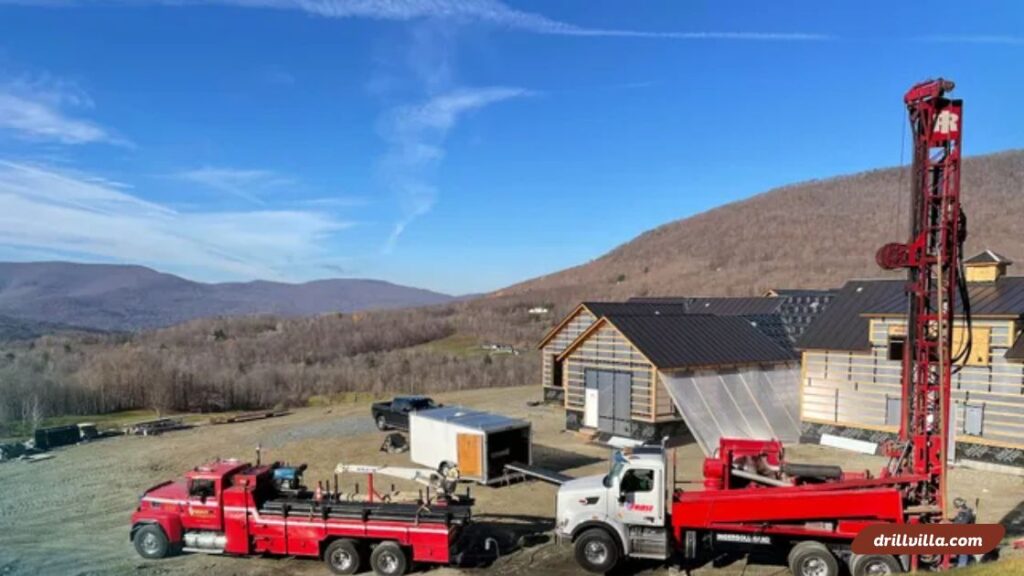Let me tell you, nothing makes you appreciate clean water like running out of it. A few years ago, I bought a piece of land in the country. It was peaceful, green, and full of promise. But there was one big problem—no water supply.
So I did what many homeowners do: I drilled a water well.
Before I started, I had so many questions. But the biggest one was this: how long does it take to drill a water well?
If you’re wondering the same thing, you’re in the right place. I’ll walk you through everything I learned—from prep to drilling to final hook-up.
Article Summary
How Long Does It Take to Drill a Water Well?
The short answer? It usually takes 1 to 3 days to drill a water well. But that’s just the drilling part. The full process takes longer when you add in other steps like planning, permits, and setting up the pump.

When I drilled my own well, I was told it would be quick. Still, a few things slowed us down. Some days went smooth. Others, not so much.
Let me break it down:
- Drilling alone took 2 full days.
- Heavy rain delayed us one afternoon.
- Hard rock layers slowed the drill.
- Setting up the rig took half a day.
- Cleanup and sealing took another full day.
So in total, the whole drilling phase—from when the crew arrived to when the hole was done—took about 3 days for me.
But if you’re lucky and the land is easy to work with, it can take just one day.
It really depends on:
- How deep the water is
- What kind of soil or rock you have
- The size and power of the drill rig
If your well needs to go deep, it will take longer. If you hit soft ground, it goes fast.
Also, keep in mind:
- Some wells need extra work like widening the hole or cleaning out sand
- Drill crews may take breaks between steps if they’re waiting on parts or testing
Here’s the quick summary before we dive deeper:
| Step | Estimated Time |
|---|---|
| Site Inspection | 1 day |
| Permitting & Paperwork | 1–10 days |
| Drilling the Well | 1–3 days |
| Well Casing & Sealing | 1 day |
| Pump Installation | 1 day |
| Water Testing & Hook-up | 1–2 days |
| Total Time (Typical) | 5 to 10 days |
But here’s the truth: things don’t always go as planned. In my case, it took almost two weeks. Weather delays, scheduling issues, and one nasty surprise underground slowed things down.
Step-by-Step Of What Actually Happens
Drilling a water well takes more than just digging. First, a pro checks the site, which takes a few hours. Permits follow and can take 3 days to 2 weeks. Drilling the well usually takes 1 to 3 days. After that, the crew installs a casing and seal in about a day.
Then, they add the pump, which takes another day. Finally, water testing and plumbing hook-up wrap things up in 1–2 days. In total, the whole process can take 1 to 2 weeks, depending on your location and soil. It’s noisy, messy, but so worth it in the end!
1. Site Inspection and Planning
This is where everything begins. A pro comes out, walks the land, and looks for the best place to drill.
- Why it matters: You don’t want to hit rock or drill in a dry zone.
- How long it took me: Just a few hours.
They used rods and maps to “dowse” or locate groundwater. Some still use old-school Y-shaped sticks! I was skeptical, but they found water.
Tip: Make sure your chosen site is at least 100 feet away from septic tanks and animal pens.
2. Permits and Paperwork
Yep, you can’t just start drilling. You’ll likely need a permit from your city, county, or state.
- Time it took me: 3 days (lucky me!)
- Worst-case scenario: Up to 2 weeks, depending on your location.
I had to show land deeds, pay a fee, and wait for the green light. Your local well driller usually helps with this.
3. Drilling the Well
Here comes the big moment—the drill rig shows up.
- Time it usually takes: 1 to 3 days.
- Depth varies: Could be 100 feet or over 500 feet.
- In my case: It took 2 full days.
The noise is loud. Imagine a diesel engine plus rock grinding all day. My dog hid under the porch for hours.
They used a rotary drilling rig with water and air to keep the hole clean. Every time they hit a new layer of soil or rock, they paused to check for water.
4. Casing and Sealing the Well
Once they hit water, they installed a casing—a big pipe that keeps the walls from caving in.
- Time required: Usually 1 day.
- What’s involved: Steel or PVC pipe, a concrete seal, and gravel pack.
They also added a sanitary seal to stop bacteria from entering the well. This is super important. You don’t want surface water contaminating your supply.
5. Pump Installation
Now that the well was drilled and sealed, it needed a pump.
- Time to install: 1 day.
- Pump type: I chose a submersible pump—quiet and reliable.
They also connected it to a pressure tank in my garage. That way, the water doesn’t flow in bursts. Smooth pressure all the way.
Tip: Get a variable-speed pump if your household water needs change often.
6. Testing the Water and Hooking It Up
This final step ensures the water is safe to drink.
- Time to test water: A day or two.
- What they tested for: Bacteria, nitrates, pH, iron, and more.
In my case, the water was clean—but had a bit of iron. I added a simple filter to fix that.
After testing, they connected the plumbing to my house. Voilà—running water!

Common Delays That Can Slow Things Down
Let’s be honest. Drilling a well isn’t always fast. Here’s what can add time:
- Bad weather (rain or snow can stop drilling)
- Hard rock layers (slows the drill down)
- Permit delays
- Equipment breakdown
- Scheduling conflicts (drillers are often booked weeks in advance)
If your land has boulders or clay, expect some slowdowns. My crew had to bring in a bigger rig when they hit bedrock.
How Deep Will the Well Be?
Well depth depends on where you live. On flat land, it may be 100 to 150 feet deep. In rocky or hilly areas, it can go 300 to 500 feet. In dry or desert spots, it may need to go over 500 feet. A deeper well takes more time and costs more money. It depends on your area. Here’s a rough idea:
| Region | Average Depth |
|---|---|
| Flat farmland | 100–150 feet |
| Rocky or hilly land | 300–500 feet |
| Desert or dry zones | 500+ feet |
The deeper the well, the longer it takes—and the more it costs.
How Much Water Will I Get?
That depends on the yield, which is measured in gallons per minute (GPM).
- Low yield: Under 5 GPM (may need a holding tank)
- Good yield: 5–10 GPM (enough for most homes)
- High yield: 10+ GPM (perfect for large families or farms)
Mine gave 7 GPM—just right for a small household with laundry, showers, and a garden.
How Much Does It Cost?
I know, this article is about time—but money matters too. Here’s what you might spend:
| Item | Cost Range |
|---|---|
| Permits & Fees | $200 – $800 |
| Drilling (per foot) | $15 – $30/foot |
| Casing & Seals | $500 – $2,000 |
| Pump & Pressure Tank | $1,000 – $3,000 |
| Total (Typical) | $4,000 – $15,000 |
Deeper wells = more time = more money.
FAQs: Quick Answers You’ll Need
Q: Can I drill a well myself?
A: Technically yes, but it’s risky and often illegal without permits. I’d recommend hiring a pro.
Q: Is well water safe to drink?
A: Yes—once tested. Mine needed a simple filter, but it was safe.
Q: What’s the best time of year to drill?
A: Spring and fall are ideal—less mud than spring, but not frozen like winter.
Q: How long does a well last?
A: A properly drilled well can last 30–50 years or more.
My Final Thoughts (What I Learned)
Drilling a water well was one of the best decisions I’ve ever made. It gave me peace of mind, clean water, and a feeling of independence.
Yes, it took a little over 10 days. But once I had that first glass of cool well water, it was all worth it.
If you’re thinking about doing it—go for it. Just be patient, ask questions, and hire someone with experience.